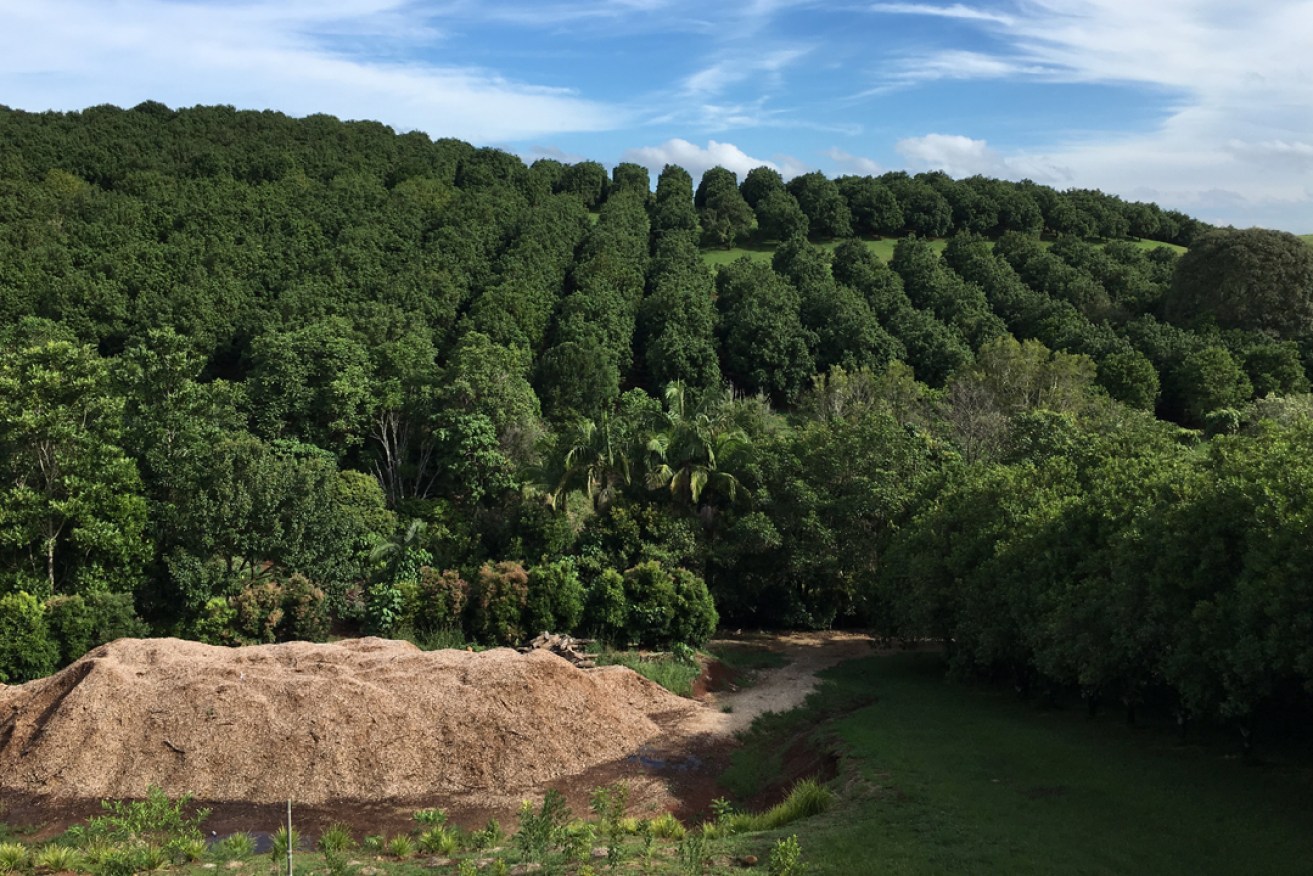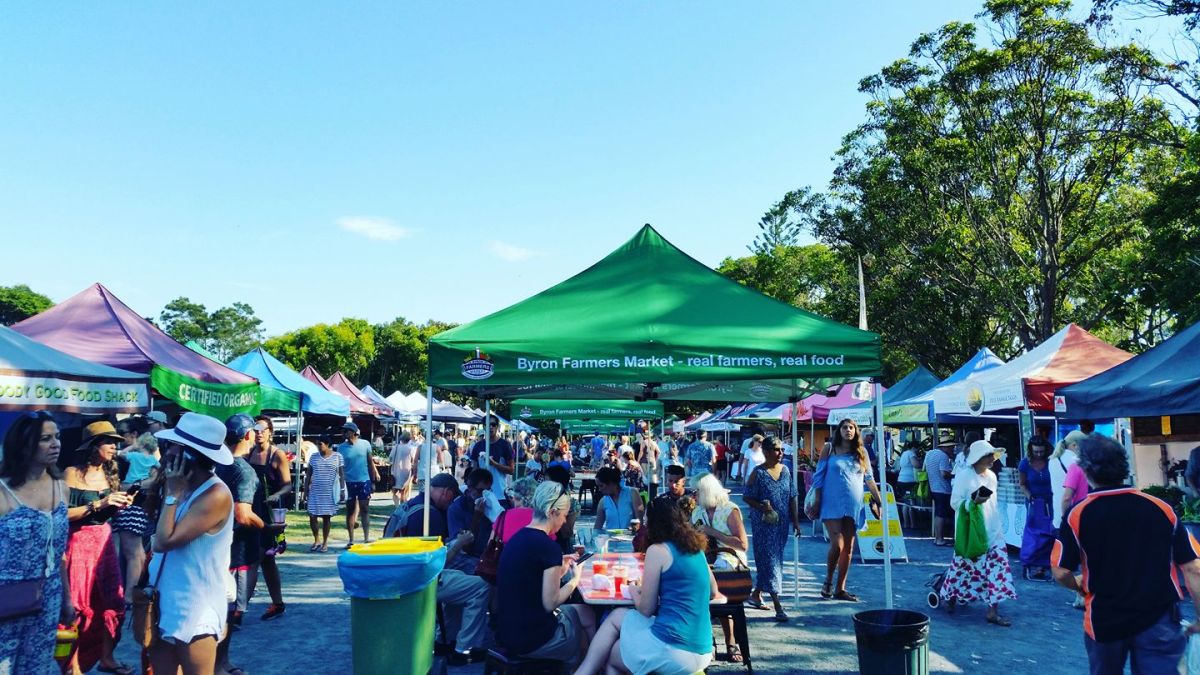Byron markets a tasty tour of the hills
There’s more to Byron Bay than beaches, spa treatments and wind chimes.

A macadamia orchard at Brookfarm near Byron Bay. Photo: AAP
For decades, people with a love of the land have headed to the green hills and red volcanic soil of north-east New South Wales.
Sugarcane was once the dominant crop, but today macadamias give it a run for its money. Sweet potatoes, tomatoes, avocadoes, peppers, chillies, bananas, dragon fruit, melons, zucchinis and much more grow in gorgeous profusion.
Much of this cornucopia is grown organically or sustainably. When you hear farmers talk passionately about how they control pests or fertilise using natural methods, it’s inspiring, not hippy-dippy. They love this land and want to keep it special. What’s not to like?
They also want you to understand the importance of knowing what you put in your body. If that’s lots of vegetables, nuts and fruit, grown locally and naturally… well, again, what’s not to like?
You get a sense of this at the farmers’ markets that are a movable feast around Byron Shire. You can track one down most days, but the most famous – the Byron Farmers Market – is in Butler Street Reserve every Thursday from 7am to 11am.
Go early to see both produce and farmers at their freshest.
If you’re a guest at the five-star Byron at Byron resort, head chef Gavin Hughes will take you on a relaxed guided tour of the market. Hughes, a charming Scot, knows most of the stallholders: “This is a meeting place for the whole community,” he explains.

All the Byron Farmers Market stallholders are growers, he adds. He gestures at the Myocum Coffee stall, where Bob James is literally standing behind his product.
“For this guy to sell his coffee at this market, he needs to grow here, roast here,” Gavin says. “Everything has to be completely locally sourced.”
As I sip a frothy cappuccino, Bob tells me he started growing coffee in the area in 1994. He does three local markets: “New Brighton on Tuesday, Byron Bay on Thursday and Mullumbimby on Friday.”
Nearby, Tom Ahern is manning his organic-pasta stall and talking about today’s special – bushman’s pesto ravioli (made with ricotta, fresh basil, lemon myrtle, mountain pepper, fresh lemon, and chilli from his own garden).
Tom passes on the best way to cook it: five times the amount of water to pasta, and plenty of salt in the water. And one more thing: “Don’t over-sauce it. Australians tend to over-sauce.”
At the wheatgrass stall, Michaeli (she prefers to be called “the sprout lady”) is feeding tiny bright-green blades into a grinder. A more-than-usually musical busker strums and hums across the way.
“Have you tried wheatgrass juice?” Gavin asks. “No? You neither?”
He turns to Michaeli: “Two virgins!” She smiles and hands over two small glasses. Wheatgrass juice is full of vitamins and trace minerals, but it’s … an acquired taste.
For me, the market star is the amazingly beautiful fresh produce – everything from radishes and feathery-topped carrots to all sorts of verdant leaves – basil, baby rocket, turmeric, purslane… The stalls are as beautiful as any florist’s shop.
If you come to Byron, you must try macadamias: the delicious, nutritious nut is native to the area. More and more macadamia orchards are springing up in Byron’s hills and coastal plains.
So at the Rainforest Foods stall I buy a 1kg vacuum-pack of raw (but shelled) macadamias ($38), plus a 600gm jar of roasted-macadamia butter ($23).
Both are delicious. Raw macadamia tastes a little like coconut. (If you prefer the taste of roasted, just pop the raw nuts in the oven for about eight minutes or until golden. Add salt or spice to taste.)
As for macadamia butter… well, it’s pure luxury. It’s addictive, but if you run out I’m told you can just place some macadamias (raw or roasted) in a food processor and whirr for three to six minutes.
I move on to a stall selling artisan “dryland” rice, grown by Frank Boyle in the Nimbin Valley with no supplementary water. I add some brown jasmine rice to my hessian bag.
By now it’s pretty clear the 7kg carry-on luggage allowance won’t be enough for my return flight. I’ll think about that later.
There’s so much here to taste and admire, such as Grumpy Grandma’s award-winning olive products. And another stall’s enticing display of opal basil, turmeric, purple snake beans and betel leaves.
At Bob and Liz Grey’s garlic stall, I learn the big, beautiful Russian garlic will last up to five months on a kitchen bench-top without sprouting. The little bag I buy for $10 turns out to be a brilliant investment – so much better than any garlic I’ve tried before.
At Heartbreads, Rachel Pearson sells artisan loaves made from nothing more than levain, flour, salt and water. She also has some bottles of water kefir, a fermented probiotic. She hands me a little cup: “It’s probably the healthiest thing you’ll have all day.”
I leave the market with a bulging hessian bag. I estimate it weighs 7kg.
That’s settled then. This lot is coming in the cabin with me. I’ll check in my clothes.
Getting there: Byron Bay is an easy drive from both Ballina and Gold Cast airports. (Ballina is closer, Gold Coast has more flights.)
Staying there: The Byron at Byron Resort and Spa is a five-star resort set in over 18ha of rainforest. Rates from $300 per night.
Playing there: Byron Farmers Markets are held every Thursday from 7am to 11am in Butler Street Reserve. Details of all the Byron Shire markets can be found here.
The author travelled as a guest of Australian Macadamias.
-AAP




